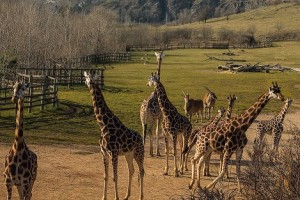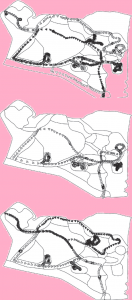
Not much knowledge exist about the importance of users for the innovation processes in tourism companies, about how much user-based innovation is used in practice in this area or about how this best can be practically done.
In a new study, this is explored on the basis of a case study in a Northern European safari park. The case study use GPS technology to track the visitors as a part of the foundation for user based innovation. The study then explores how this kind of data more generally can be used for practical tourism innovation.
The study is described in a new book chapter called ”Potentials for user-based innovation in tourism: the example of GPS tracking of attraction visitors” by ISE researchers Flemming Sørensen and Jon Sundbo.
Measuring the visitors’ experience of the park
The study was designed as a field experiment, which in itself is something relatively new in innovation research.
Besides the GPS tracking of the visitors, the study furthermore made use of 20 semi-structured interviews were made with tracked visitors a few weeks after their visit.
The main focus of it all however was the GPS tracking and its potentials for user-based innovation in tourism, and the book chapter concludes that “because tourists actively create their own experiences, GPS tracking and other technical observation methods are able to provide important inputs to user-based innovation in tourism”.

Production and consumption are inseparable
Flemming Sørensen and Jon Sundbo write that what user-based innovation does is that it “attempts to spot user behavior to foresee future consumer choices and develop innovations to fulfill these”. The different roles, users may play in such user-based innovation is “as sources of innovation in idea generation phases, as co-creators in development phases and/or as users in test and implementation phases”.
User-based innovation has particular and very significant potential in tourism, since production and consumption are inseparable in this area. Tourists automatically hold valuable knowledge, since they co-produce their own tourism experiences.
Knowing how tourists wish to design their experiences by populating environments of tourism companies is very important for companies that want to innovate their environments to optimize user experiences: “The essential role played by tourists in creating tourism experiences means that they are the most important learning source for tourism companies”.
*The whole book chapter can be read in the book “Handbook of Research on Innovation in Tourism Industries”, edited by Gry Agnete Alsos, Dorthe Eide, Ejnar Lier Madsen from Nordland Research Institute and currently in press.
